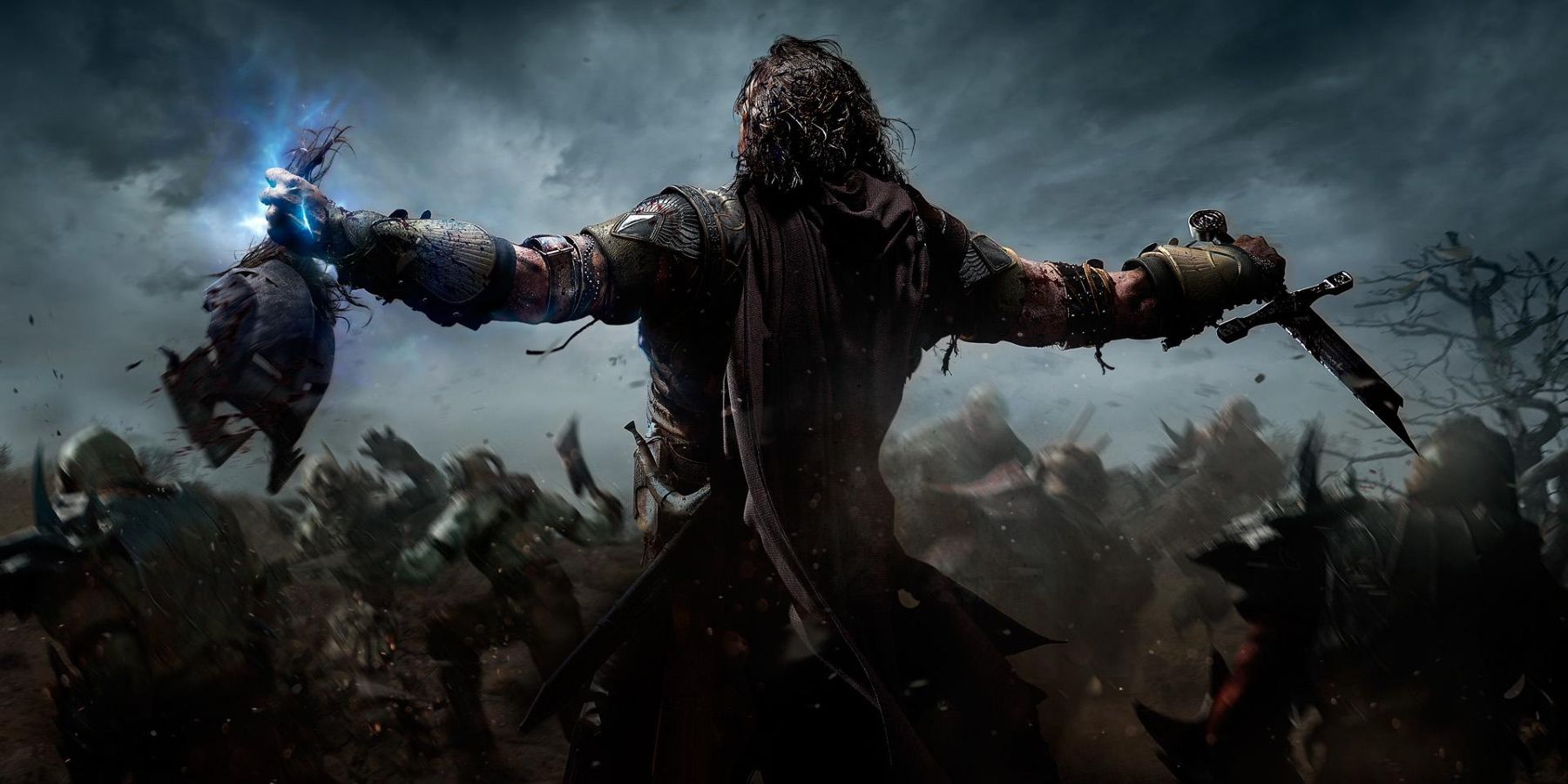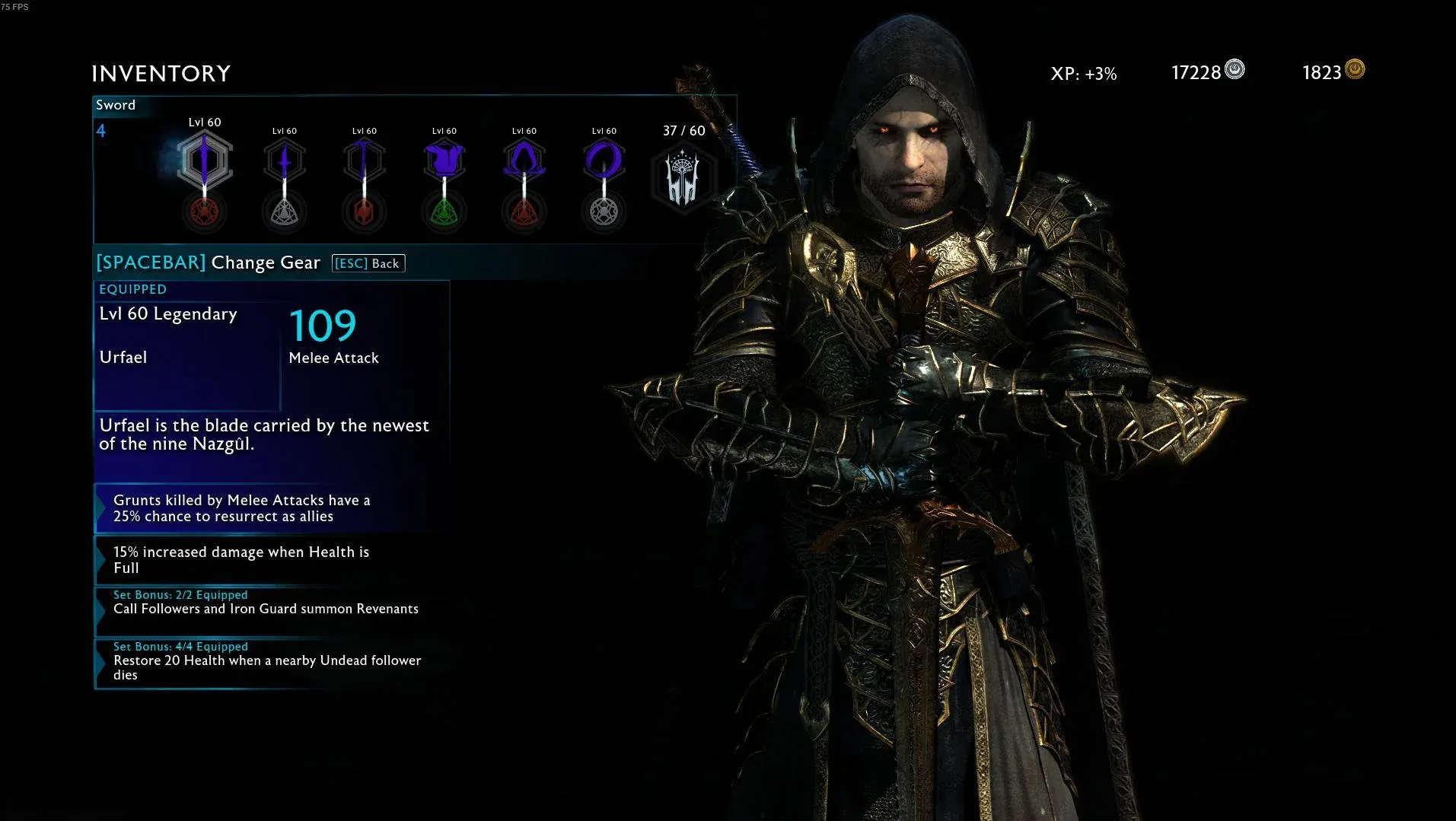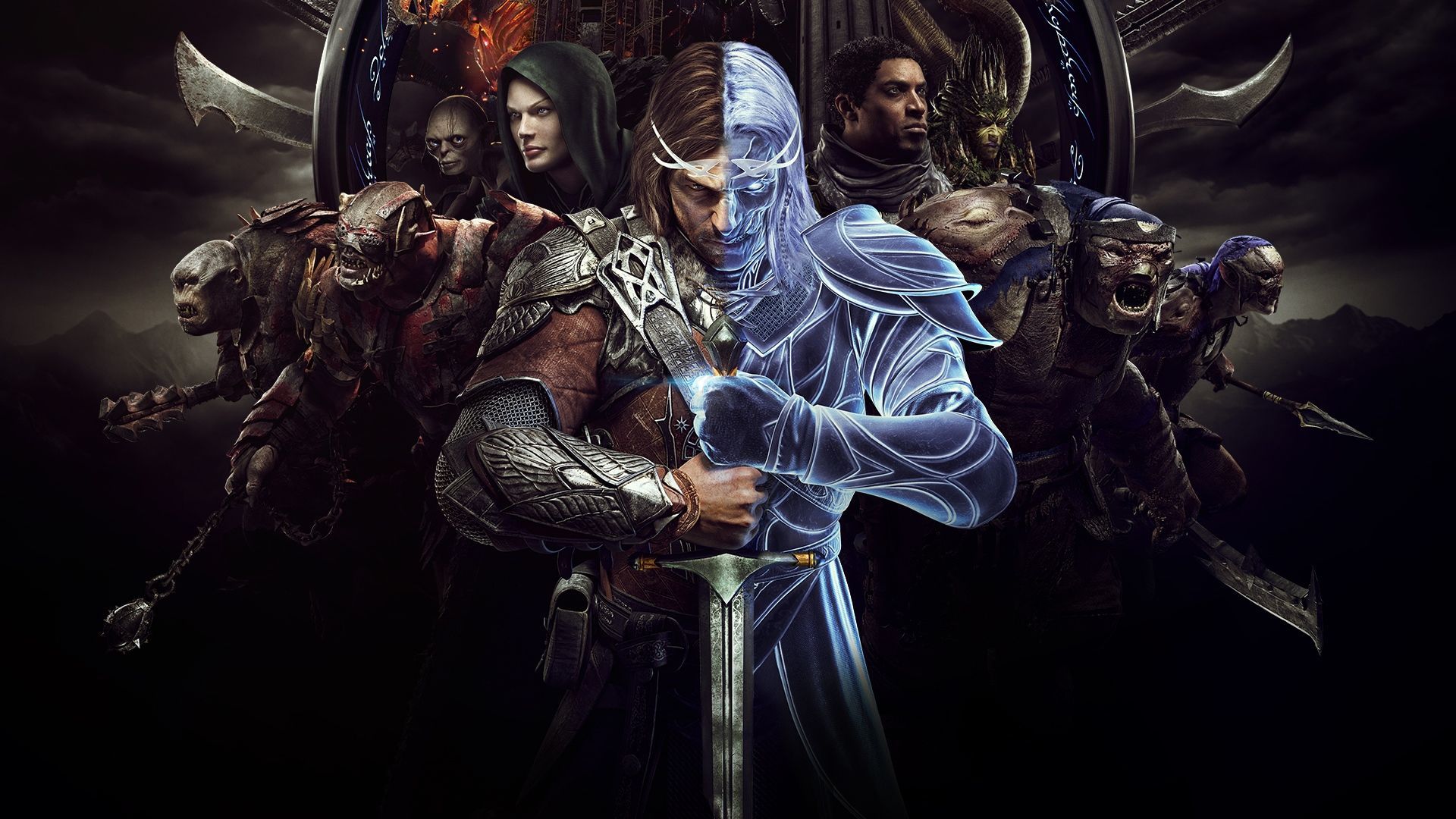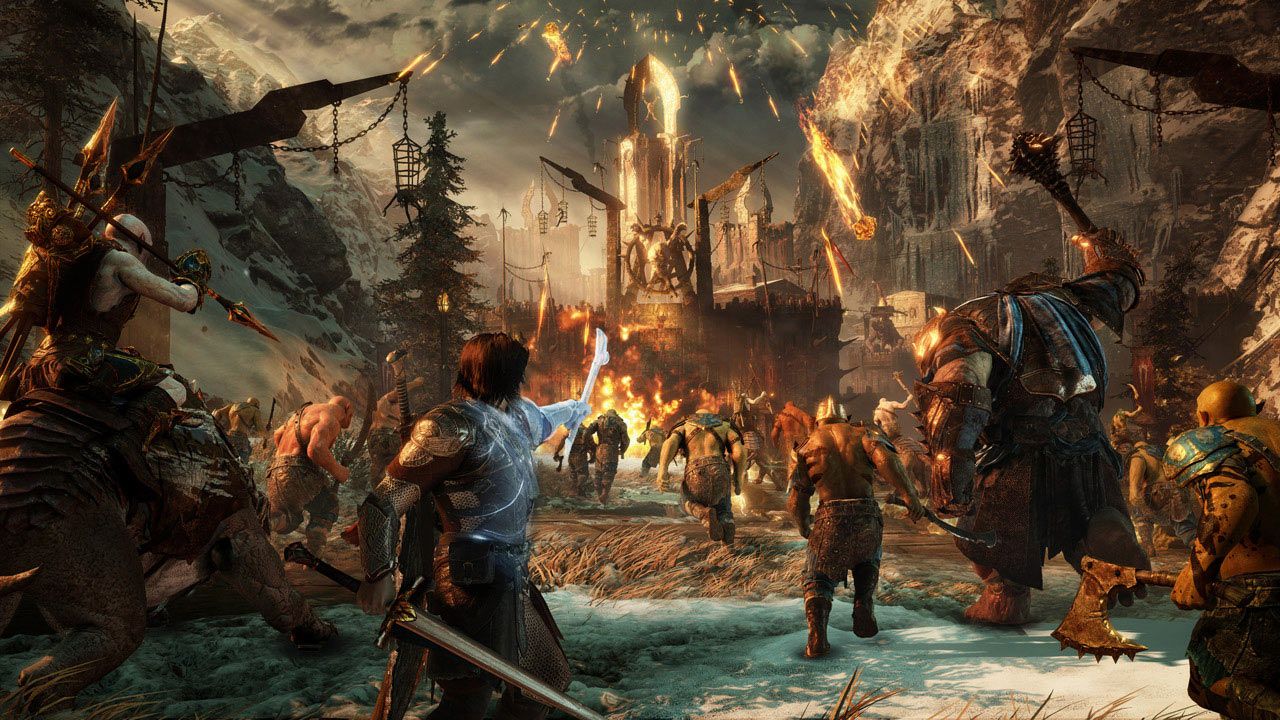Middle-earth: Shadow of Mordor bore a significant burden on its shoulders as it ambitiously aimed to refurbish video games set within J.R.R. Tolkien’s The Lord of the Rings IP. The Lord of the Rings is one of the most popular fantasy IPs, but its games have generally not quite lived up to that popularity. The Lord of the Rings’ film trilogy adaptations, The Lord of the Rings: The Third Age, and The Lord of the Rings: War in the North are only a handful of titles familiar to fans of the IP, but none may have had such an impact on contemporary AAA titles.
Middle-earth: Shadow of Mordor is an open-world action-adventure game with linear missions. Its combat echoes that of Rocksteady’s Freeflow combat in the Batman: Arkham franchise, but what made it truly unique was it blended wraith abilities and Monolith Productions’ patented Nemesis System. Monolith’s Middle-earth franchise has seemingly ceased after only its second installment, Middle-earth: Shadow of War, but there is much more potential in the series if non-canon narrative threads are followed and if its superb gameplay features were expanded upon.
Middle-earth: Shadow of War’s Sequel Could Explore Talion’s Ringwraith Persona
Middle-earth: Shadow of War concludes with a surprising twist that ties it directly into The Lord of the Rings: The Fellowship of the Ring. In its non-canon lore, Talion becomes corrupted as a Ringwraith after his separation from Celebrimbor. While this has significant effects on Middle-earth: Shadow of War's narrative, it also allowed for some unique sequences and gameplay in the third act; such as dark armor representative of the hooded and black-clad Nazgul. This made for some of the most rewarding armor sets found in Middle-earth: Shadow of War.
In a follow-up sequel to Middle-earth: Shadow of War, Talion could command the Nazgul of Minas Morgul as players fully excise Orcs, Uruks, Goblins, and other horrific creatures. Middle-earth: Shadow of Mordor's Nemesis System creates dynamic relationships between the player and named enemies that appear, such as Captains and Warchiefs.
In a dark take on Middle-earth as a playable Ringwraith, it would be interesting to see players able to corrupt human enemies and pledge allegiance fully to Sauron and Middle-earth’s dark forces. Here, players could lay siege to Middle-earth’s most notable kingdoms, such as Arnor, Gondor, Rohan, and Dale.
However, there is a limitation to this narrative arc and could run the risk of feeling shallow as a result. Middle-earth: Shadow of War's definitive conclusion could make a third entry with a Ringwraith Talion feel like an expansion, rather than its own title, especially since players had been given a taste of what that experience would be like in Middle-earth: Shadow of War. Instead, if Monolith decided to fully embrace its non-canon approach to Middle-earth, the franchise could be taken in a new direction entirely with a threequel.
Middle-earth: Shadow of Mordor’s Non-Canon Story is a Great Opportunity
Talion becoming one of the Ringwraiths that eventually pursues Frodo Baggins was not a narrative tie-in that Middle-earth: Shadow of War needed to produce in order to craft a coherent conclusion. If anything, this ending determines that developer Monolith Productions knew Middle-earth: Shadow of War would be the final installment in their Middle-earth series featuring Talion.
Otherwise, it may not have been so definitive as to where the character ends up, especially with how far a gap in time occurs between Middle-earth: Shadow of War and The Lord of the Rings: The Fellowship of the Ring in terms of canonical, lore-relevant timelines. Canon continuities are not followed in Middle-earth: Shadow of Mordor, but its timeline at least attempts to follow that of its place between The Hobbit and The Lord of the Rings: The Fellowship of the Ring, which is only separated by about 60 years.
In light of this, Middle-earth: Shadow of Mordor and Middle-earth: Shadow of War are technically able to feature characters such as Gollum as NPCs, ignoring the fact that these interactions would not have been part of the actual continuity. Moreover, Middle-earth: Shadow of War featured a loose interpretation of Shelob, who could transform into a woman.
The Amazing Spider-Man’s video game adaptation, which behaved as a non-canon sequel to the film it was adapted from, could be a distinct blueprint. At the same time, Monolith should be unafraid to delve further into uncharted territory within the franchise. Middle-earth: Shadow of Mordor took a considerable step outside conventional iconography and introduced areas in Mordor fans of the films would not anticipate there to be, such as Nurn.
On the other hand, Middle-earth: Shadow of Mordor’s threequel could be a completely new entry in the Middle-earth franchise, following a new playable protagonist with their own abilities and narrative. The subtitle of Shadow of Mordor is only representative of Mordor itself, but the preceding title of Middle-earth could be leaned on in a new installment that features a starkly opposite region or kingdom in Tolkien’s Legendarium.
Middle-earth: Shadow of War’s Siege Gameplay Should Not Be Abandoned
Talion, a Gondorian Ranger, was blended with Celebrimbor, a Noldorin High Elf prince and the forger of the Rings of Power. Their combined wraith abilities made for a balance of melee, stealth, and ranged attacks that felt satisfying after subsequent upgrades to traversal; such as Middle-earth: Shadow of War's Shadow Strike, which lets players chain insta-kills from far distances. These mechanics would be sorely missed if abandoned, but there is a hugely impactful feature that made the franchise even more unique.
Middle-earth: Shadow of War introduced a massive strategy feature with sieges, where the player's amassed army of recruited NPCs would be put to task and attack a vulnerable stronghold. These sieges differentiated its gameplay greatly from Middle-earth: Shadow of Mordor and offered a reason to level-up and recruit only the best Orcs and Uruks available. Players then needed to defend their own strongholds after they were secured, and the suspenseful risk of an Orc ally overthrowing the player was always an interesting dynamic to see unfold as part of the Nemesis System.
It was announced that Monolith has been working on a standalone Wonder Woman game. The chances of another Middle-earth title from Monolith seem slim, at least at this point in time, but there is enough content at its feet to warrant another installment; whether it is wholly new or a sequel to Middle-earth: Shadow of War. Similar to the insistence of Star Wars content relying upon the Skywalkers, there is also a ton of content that The Lord of the Rings does not envelop that could make for fantastic settings, narratives, or characters in a future Middle-earth title.
Middle-earth: Shadow of War is available now on PC, PS4, and Xbox One.




